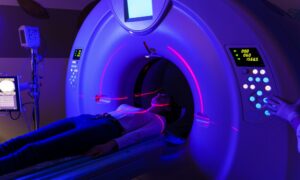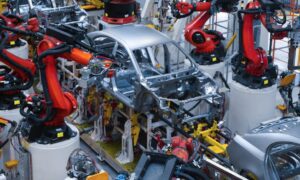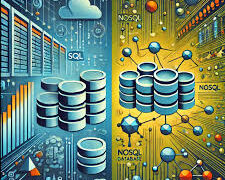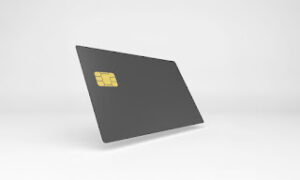Welcome to the electrifying world of quantum computing! Have you ever wondered how those mind-boggling machines, capable of exponential computational power, actually work? Well, get ready for a shocking revelation as we dive deep into the mesmerizing realm of quantum computing and uncover its profound connection with electricity.
Introduction
Quantum computing, a relatively new and emerging field, has been gaining attention for its potential to solve complex problems that are beyond the capabilities of classical computers. Along with this buzz, there is often confusion and skepticism surrounding the capabilities of quantum computers and how they differ from traditional classical computers. In order to understand the unique features of quantum computing, it is important to first explore what sets it apart from classical computing.
One of the key differences between quantum and classical computing lies in their fundamental building blocks: bits vs. qubits. Classical computers use bits as their basic unit of information, which can exist in only two states: 0 or 1. These bits are physically represented by electrical signals that travel through transistors on a silicon chip. On the other hand, quantum computers use qubits (short for quantum bits) as their basic unit of information. Unlike bits, qubits can exist in multiple states at once due to a phenomenon called superposition.
Superposition is one of the most significant principles in quantum mechanics because it allows qubits to hold both 0 and 1 simultaneously. This means that, while a bit can represent only one value at a time, a qubit can represent an infinite number of values simultaneously. This ability gives quantum computers an unparalleled advantage when it comes to processing large amounts of data and solving complex problems.
The Role of Electricity in Traditional Computers
Traditional computers, also known as classical computers, have been an integral part of our daily lives for decades. These machines rely heavily on the flow of electricity to perform computations and carry out tasks. In fact, it would be impossible to imagine a world without electricity and its crucial role in powering traditional computers.
At the core of traditional computers lies the fundamental building block called the transistor. Transistors are tiny devices that act as switches, controlling the flow of electricity through a circuit. They were first invented in 1947 and have since revolutionized the field of computing with their ability to amplify and switch electronic signals.
The transistors used in traditional computers are made from semiconducting materials such as silicon or germanium. These materials have unique properties that allow them to conduct electricity under certain conditions but not others. This characteristic is what makes transistors so useful for creating digital circuits in traditional computers.
When an electric current is applied to a transistor, it can either allow or block the flow of electrons, depending on its state—on or off. This binary state forms the basis for all calculations and operations performed by traditional computers. By using millions (or even billions) of transistors arranged in complex patterns, modern computer processors can process information at incredible speeds.
How do quantum computers utilize electricity?
Electricity plays a crucial role in the functioning of any computer, including quantum computers. Similar to classical computers, quantum computers require a power source to run and operate. This power source is usually provided by electrical energy in the form of batteries or plugged into an outlet.
However, what sets quantum computers apart from traditional ones is the way they use electricity. In classical computing, electric current is used to represent data and perform logical operations through switches called transistors. These transistors act as tiny on-off switches that control the flow of electrons through circuits.
In contrast, quantum computing utilizes electricity in a different way. In this type of computing, instead of using electric currents as signals for processing information, particles such as photons or ions are manipulated to encode information into qubits.
One of the key components of a quantum computer is the quantum processor, which is made up of superconducting materials that are cooled down to extremely low temperatures (near absolute zero) to create what is known as a cryogenic environment. In this environment, electrons can flow through these superconductors with almost no resistance, allowing for precise control and manipulation of qubits.
The qubits in a quantum computer are typically trapped within microchips made from superconducting circuits, called quantum gates. These gates use electrical signals to manipulate the state of qubits and perform operations such as entanglement and interference—two fundamental principles of quantum computing.
Entanglement is the phenomenon where two or more particles become connected in such a way that any change in one particle’s state instantly affects the other. This allows for multiple qubits to work together and perform calculations simultaneously, making quantum computers much faster than classical computers.
Challenges and Limitations with Electricity in Quantum Computing
The use of electricity is fundamental in all forms of computing, including quantum computing. However, the world of quantum physics presents unique challenges and limitations when it comes to harnessing and utilizing electricity in quantum computers. In this section, we will explore some of the key challenges and limitations of electricity in quantum computing.
1. Controlling Quantum Bits (Qubits):
In classical computers, information is stored and processed using binary digits or bits that can have a value of either 0 or 1. In contrast, quantum computers use qubits, which can exist simultaneously as both 0 and 1 through a phenomenon called superposition. This makes qubits incredibly powerful for solving complex problems but also very fragile.
Controlling qubits requires precise manipulation at the atomic level using electrical signals. However, due to their small size and sensitivity to external disturbances, maintaining stable control over qubits becomes a significant challenge. Even slight variations or fluctuations in the electrical signals can cause interference that can lead to errors in calculations.
2. Scaling up:
One of the primary goals of quantum computing is to build systems with thousands or even millions of qubits, allowing them to solve problems that are currently beyond the capabilities of classical computers. However, scaling up comes with its own set of challenges related to electricity.
As more qubits are added to a system, managing their interactions becomes increasingly complex. The amount of electrical energy required for controlling each individual qubit increases exponentially as more qubits are added.
Advancements and Innovations in Quantum Computing Technology
One of the key advancements in quantum computing technology has been in the realm of qubits, the basic building blocks of a quantum computer. Traditional computers use bits, which can represent only two states: 0 or 1. In contrast, qubits have an additional state called superposition, where they can exist in both 0 and 1 simultaneously. This allows for exponentially more calculations to be performed at once compared to classical computers.
Early quantum computers used physical systems such as atoms or ions as qubits, but these were limited in scalability and stability. However, recent breakthroughs have led to the development of new types of qubits that show promise for practical applications.
One such innovation is topological qubits, a type of qubit that takes advantage of exotic states of matter known as topological insulators. These materials have unique properties that make them resistant to decoherence, a phenomenon where external interference causes the loss or distortion of information stored in a system. This makes them ideal for use as stable and reliable qubits.
Future Implications of Electricity in Quantum Computing
The future implications of electricity in quantum computing are vast and far-reaching. As the field of quantum computing continues to advance, the role of electricity will become increasingly important. In this section, we will explore some of the potential impacts that electricity may have on the future development and implementation of quantum computers.
1. Advancements in Quantum Processing Units (QPU)
One major implication of electricity in quantum computing is its impact on the development of more powerful quantum processing units (QPUs). QPUs are responsible for performing calculations within a quantum computer, and their performance is largely determined by the amount and quality of electricity they receive.
With advancements in electrical technology, such as better conductors and more efficient power sources, we can expect to see significant improvements in QPU capabilities. This could lead to faster computation speeds, larger qubit capacities, and ultimately more complex calculations being performed by quantum computers.
2. Energy Efficiency
Another implication of electricity in quantum computing is energy efficiency. Traditional computers require a lot of energy to perform complex computations, which can lead to high energy costs and environmental concerns. However, with advances in electrical technology specifically tailored for use in quantum computers, we can expect to see much more efficient use of energy.
For example, researchers are currently exploring ways to design QPUs that consume less power while still maintaining high computational capabilities. This could significantly reduce overall energy consumption in data centers that house large-scale quantum computers.
3. Development of New Materials
Electricity plays a crucial role not only in powering quantum computers but also in the development of new materials used in quantum computing. The unique properties of quantum materials, such as superconductivity, are heavily dependent on electricity.
As we continue to understand and manipulate these materials, we may see new breakthroughs that enable more efficient and powerful quantum computers. This could lead to further advancements in fields such as medicine, chemistry, and finance by allowing for more accurate simulations and predictions.
Conclusion
Understanding the intricacies of quantum computing requires a deep understanding of quantum mechanics and computer science. It is an interdisciplinary field that combines concepts from various disciplines such as physics, mathematics, computer engineering, and more. As research continues to advance in this area, we can expect to see groundbreaking developments that will shape our technological landscape in the coming decades.



































